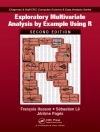Music therapists from around the world working in conventional and unconventional settings have offered their contributions to this exciting new book, presenting spirited discussion and practical examples of the ways music therapy can reflect and encourage social change. From working with traumatized refugees in Berlin, care-workers and HIV/AIDS orphans in South Africa, to adults with neurological disabilities in south-east England and children in paediatric hospitals in Norway, the contributors present their global perspectives on finding new ways forward in music therapy.
Reflecting on traditional approaches in addition to these newer practices, the writers offer fresh perceptions on their identity and role as music therapists, their assumptions and attitudes about how music, people and context interact, the sites and boundaries to their work, and the new possibilities for music therapy in the 21st century. As the first book on the emerging area of Community Music Therapy, this book should be an essential and exciting read for music therapists, specialists and community musicians.
Innehållsförteckning
Foreword. Even Ruud. Introduction: The Ripple Effect. Mercédès Pavlicevic and Gary Ansdell. Part I. New Name, Old Game? 1. Learning from Thembalethu: Towards Responsive and Responsible Practice in Community Music Therapy. Mercédès Pavlicevic. 2. Therapy to Community: Making Music in Neuro-Rehabilitation. Stuart Wood, Rachel Verney and Jessica Atkinson. Part II. What has Theory Got to do With it? 3.Rethinking Music and Community: Theoretical Perspectives in Support of Community Music Therapy. Gary Ansdell. 4. Community Music Therapy: Culture, Care and Welfare. Brynjulf Stige. 5.What Can the Social Psychology of Music Offer Community Music Therapy? Jane Davidson. Part III. Is Community Music Therapy a Challenge to the Consensus Model? 6. Whatever Next? Community Music Therapy for the Institution. Anna Maratos. 7. A Pied Piper Among White Coats and Infusion Pumps: Community Music Therapy in a Paediatric Hospital Setting. Trygve Aasgaard. Part IV. But Is It Music Therapy? 8. A Dream Wedding: From Community Music to Community Music Therapy with a Community. Harriet Powell. 9. Conversations of Creating Community: Performance as Music Therapy in New York City. Kenneth Aigen.10. Playing Politics: Community Music Therapy in a Non-medical Mental Health Setting. Simon Procter. Part V. What has Culture got to do With it? 11. Promoting Integration and Socio-Cultural Change: Community Music Therapy With Traumatised Refugees in Berlin. Oksana Zharinova-Sanderson. 12. Community Music Therapy and the Challenge of Multiculturalism. Dorit Amir. Part VI. What has Context got to do With it? 13. Music, Space and Health: the story of Music Space. Leslie Bunt. 14. Transformational Contexts in Music Therapy. David Stewart. Afterword. Mercédès Pavlicevic and Gary Ansdell. Conclusion. Mercédès Pavlicevic and Gary Ansdell. Index.
Om författaren
Gary Ansdell read music at Cambridge and trained as a music therapist at the Nordoff-Robbins Music Therapy Centre where he is now Head of Research, and at the Institute for Musiktherapie, Herdecke, Germany. He is the Editor of the British Journal of Music Therapy, an Honorary Research Fellow in Community Music Therapy at the University of Sheffield and former Research Fellow at City University, London.












